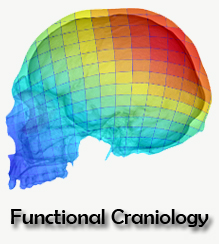 Cranial sutures are composed of fibrous connective tissue that connect the bones of the skull. Sutures primary serve as growth centers of the skull during postnatal development. Their morphology changes during life in association with age, and in response to the mechanical stresses experienced by the cranium. Cheronet et al. (2021) recently published a study in which they explore whether intrinsic and extrinsic mechanisms can impact the morphological complexity of the sagittal suture. Intrinsic factors concern positional variations within the suture and individual age at death. Extrinsic factors deal with cultural practices influencing thermal and non-thermal food preparation methods, and consequent masticatory requirements. They analysed standardized two-dimensional photographs of sagittal suture in a sample of 107 individuals from archaeological populations (Mesolithic to Middle Ages). They focused on three variables – the complexity index (the total length of the suture obtained by tracing along the sinuous route of the suture divided by the linear distance from bregma to lambda), the maximum extent (the maximum lateral distance from the line joining bregma to lambda divided by linear suture length), and the number of times the suture crosses the linear suture length. Five measurements were taken for each skull, considering the entire suture as well as four subsections of the suture (quarters). The results showed that the most apparent feature of the sagittal suture is the variation of the degree of complexity, and that such complexity is higher in the second tract of the suture. The authors observed no sexual differences, but possible age related changes. The complexity index and the maximum extent of sutures seems to peaks in young to middle age adults (26 – 35 years) and the number of crossings appears to increase in old adults (60 years and older). When individuals of different archaeological periods were compared, they observed a reduced sutural complexity in the Mesolithic group, when compared with Neolithic, Bronze Age, and Medieval populations. The authors conclude that the structural constraints play a more important role in defining the complexity of the human sagittal suture than factors associated with diet. However, they also showed that the decrease in cranial strains associated with the consumption of the softer, more heavily processed Neolithic diet, seems associated with an increase in the complexity index of the sagittal suture.
Cranial sutures are composed of fibrous connective tissue that connect the bones of the skull. Sutures primary serve as growth centers of the skull during postnatal development. Their morphology changes during life in association with age, and in response to the mechanical stresses experienced by the cranium. Cheronet et al. (2021) recently published a study in which they explore whether intrinsic and extrinsic mechanisms can impact the morphological complexity of the sagittal suture. Intrinsic factors concern positional variations within the suture and individual age at death. Extrinsic factors deal with cultural practices influencing thermal and non-thermal food preparation methods, and consequent masticatory requirements. They analysed standardized two-dimensional photographs of sagittal suture in a sample of 107 individuals from archaeological populations (Mesolithic to Middle Ages). They focused on three variables – the complexity index (the total length of the suture obtained by tracing along the sinuous route of the suture divided by the linear distance from bregma to lambda), the maximum extent (the maximum lateral distance from the line joining bregma to lambda divided by linear suture length), and the number of times the suture crosses the linear suture length. Five measurements were taken for each skull, considering the entire suture as well as four subsections of the suture (quarters). The results showed that the most apparent feature of the sagittal suture is the variation of the degree of complexity, and that such complexity is higher in the second tract of the suture. The authors observed no sexual differences, but possible age related changes. The complexity index and the maximum extent of sutures seems to peaks in young to middle age adults (26 – 35 years) and the number of crossings appears to increase in old adults (60 years and older). When individuals of different archaeological periods were compared, they observed a reduced sutural complexity in the Mesolithic group, when compared with Neolithic, Bronze Age, and Medieval populations. The authors conclude that the structural constraints play a more important role in defining the complexity of the human sagittal suture than factors associated with diet. However, they also showed that the decrease in cranial strains associated with the consumption of the softer, more heavily processed Neolithic diet, seems associated with an increase in the complexity index of the sagittal suture.
Stáňa Eisová







Leave a comment